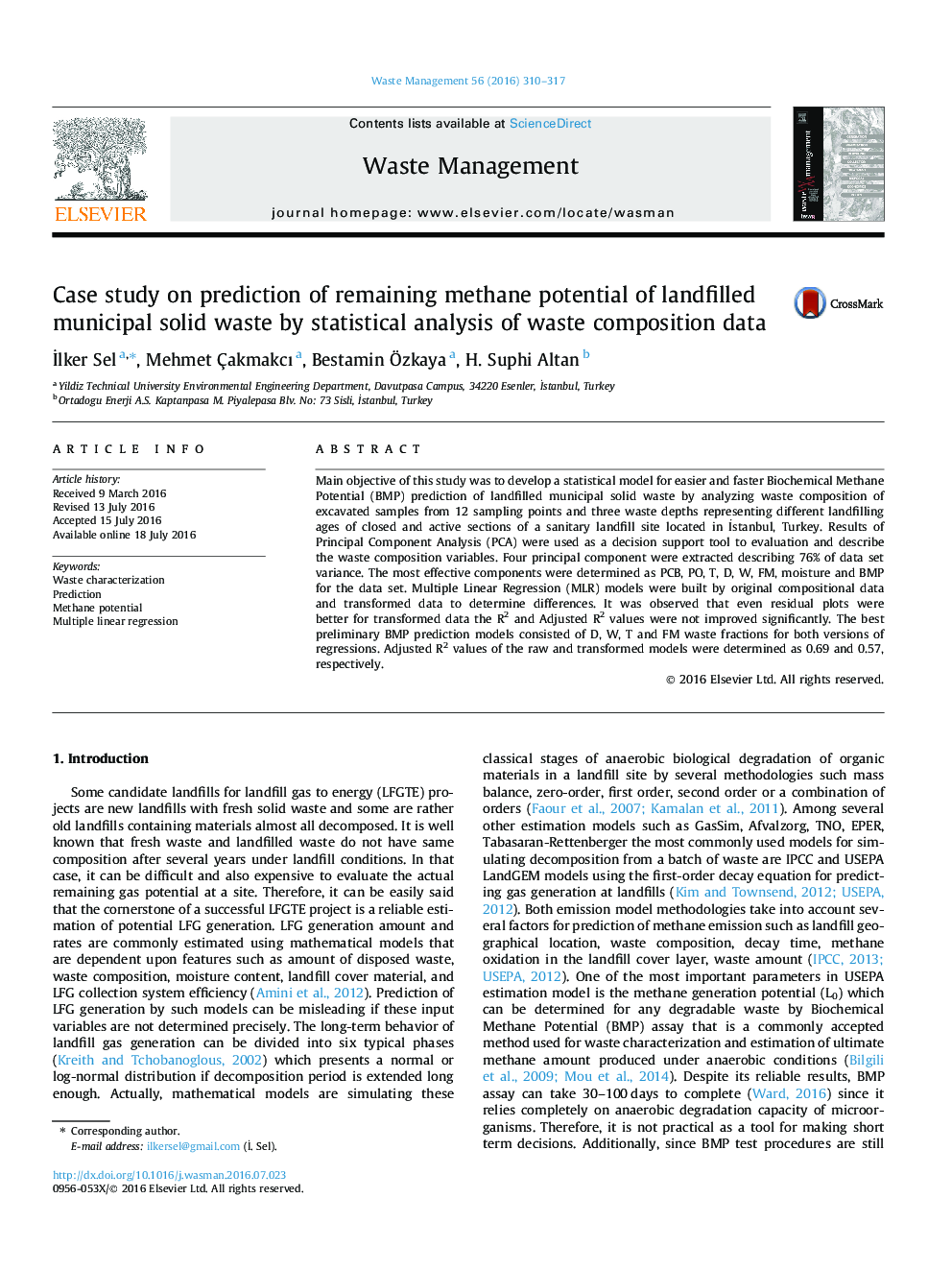| Article ID | Journal | Published Year | Pages | File Type |
|---|---|---|---|---|
| 4471141 | Waste Management | 2016 | 8 Pages |
•Old and active/fresh landfilled wastes are compared with respect to waste components.•Waste composition variables reduced by principal component analysis.•Biochemical methane potential was predicted by multiple linear regression models.
Main objective of this study was to develop a statistical model for easier and faster Biochemical Methane Potential (BMP) prediction of landfilled municipal solid waste by analyzing waste composition of excavated samples from 12 sampling points and three waste depths representing different landfilling ages of closed and active sections of a sanitary landfill site located in İstanbul, Turkey. Results of Principal Component Analysis (PCA) were used as a decision support tool to evaluation and describe the waste composition variables. Four principal component were extracted describing 76% of data set variance. The most effective components were determined as PCB, PO, T, D, W, FM, moisture and BMP for the data set. Multiple Linear Regression (MLR) models were built by original compositional data and transformed data to determine differences. It was observed that even residual plots were better for transformed data the R2 and Adjusted R2 values were not improved significantly. The best preliminary BMP prediction models consisted of D, W, T and FM waste fractions for both versions of regressions. Adjusted R2 values of the raw and transformed models were determined as 0.69 and 0.57, respectively.
Graphical abstractFigure optionsDownload full-size imageDownload as PowerPoint slide
